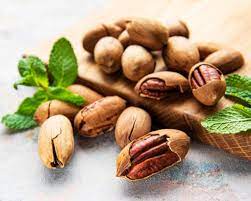Pecans are a delicious, nutrient-packed nut native to North America, widely used in pies, snacks, and baked goods. While commercial pecan orchards rely on grafted trees for faster yields and uniformity, growing pecans from seeds can be an affordable and deeply rewarding endeavor. However, it requires patience, proper planning, and care. This guide outlines everything you need to know to successfully grow pecan trees from seeds.
Table of Contents
- Selecting High-Quality Pecan Seeds
- Preparing Seeds for Planting
- Planting Pecan Seeds
- Nurturing Pecan Seedlings
- Transplanting Young Trees
- Maintaining Mature Pecan Trees
- Harvesting Your Pecans
1. Selecting High-Quality Pecan Seeds
To begin, you’ll need viable pecan seeds. Here’s how to choose the best:
- Variety: Select varieties suitable for your climate, such as Desirable, Elliot, or Pawnee.
- Freshness: Use seeds from the latest harvest. Discard any seeds showing signs of mold, rot, or damage.
Fresh, healthy seeds are key to a successful planting.
2. Preparing Seeds for Planting
Proper preparation is essential for germination. Pecans require a process called stratification to mimic natural winter conditions.
- Collecting Seeds: Harvest seeds in autumn when they fall naturally. Remove husks and air-dry for a few days.
- Stratification: Place seeds in a plastic bag filled with moist peat moss and perlite. Seal the bag and store it in the refrigerator for 3–4 months. This cold treatment triggers germination.
3. Planting Pecan Seeds
After stratification, it’s time to plant:
- Location: Choose a sunny spot with well-draining soil. Pecan trees need full sun to thrive.
- Soil Preparation: Work the soil to a depth of 2–3 feet and enrich it with organic matter. Pecan trees prefer slightly acidic soil (pH 6.0–6.5).
- Planting Depth: Sow seeds 1–2 inches deep and space them 30–40 feet apart to accommodate their large size.
- Mulch: Add mulch around the seedlings to retain moisture and suppress weeds.

4. Nurturing Pecan Seedlings
Growing strong seedlings requires consistent care:
- Watering: Keep the soil moist but not soggy. Young pecan seedlings are sensitive to drought.
- Fertilizing: Use a balanced, slow-release fertilizer in early spring, following package instructions.
- Weed Management: Regularly remove weeds to prevent competition for nutrients and water.
5. Transplanting Young Trees
After 1–2 years, your seedlings will be ready for transplanting:
- Permanent Location: Choose a sunny, spacious area with well-draining soil.
- Preparing the Site: Dig a hole twice the size of the root ball and enrich it with compost.
- Transplanting: Carefully transfer the seedling, ensuring the roots remain undamaged, and plant it at the same depth as before.
6. Maintaining Mature Pecan Trees
Proper maintenance ensures healthy growth and nut production:
- Pruning: Remove dead or diseased branches and improve airflow.
- Pest Control: Watch for common pests like aphids and pecan weevils. Address infestations promptly.
- Irrigation: Provide deep watering during dry periods.
- Fertilization: Feed your trees regularly to support robust growth and nut production.
7. Harvesting Your Pecans
Pecan trees start producing nuts 4–8 years after planting. Here’s how to harvest them:
- Timing: Nuts are ready when they fall naturally or when husks split open.
- Collection: Pick up fallen nuts daily or use a mechanical shaker.
- Processing: Remove husks and dry the nuts thoroughly. Store them in a cool, dry place.
Final Thoughts
Growing pecan trees from seeds is a labor of love that rewards you with a lifetime of nutritious, homegrown nuts. By following these steps and giving your trees the care they need, you’ll enjoy bountiful harvests for decades. Start your pecan-growing journey today and relish the satisfaction of nurturing these majestic trees from seed to maturity.
This revised version emphasizes clarity and detail, ensuring readers feel well-informed and confident in their pecan-growing endeavors.
